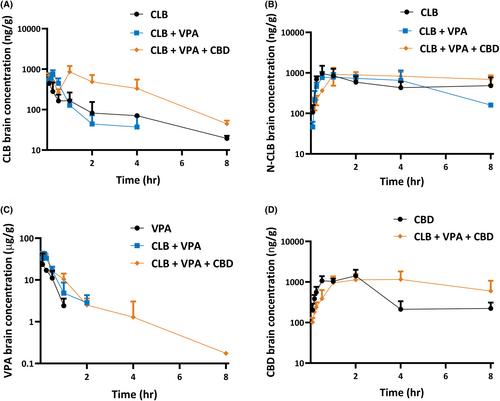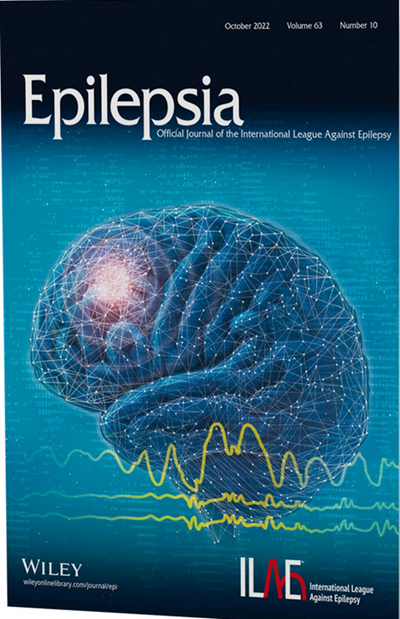Utilizing an acute hyperthermia-induced seizure test and pharmacokinetic studies to establish optimal dosing regimens in a mouse model of Dravet syndrome
Abstract
Objective
The current standard of care for Dravet syndrome (DS) includes polytherapy after inadequate seizure control with one or more monotherapy approaches. Treatment guidelines are often based on expert opinions, and finding an optimal balance between seizure control and adverse drug effects can be challenging. This study utilizes the efficacy and pharmacokinetic assessment of a second-line treatment regimen that combines clobazam and sodium valproate with an add-on drug as a proof-of-principle approach to establish an effective therapeutic regimen in a DS mouse model.
Methods
We evaluated the efficacy of add-on therapies stiripentol, cannabidiol, lorcaserin, or fenfluramine added to clobazam and sodium valproate against hyperthermia-induced seizures in Scn1aA1783V/WT mice. Clobazam, N-desmethyl clobazam (an active metabolite of clobazam), sodium valproate, stiripentol, and cannabidiol concentrations were quantified in plasma and brain using liquid chromatography–tandem mass spectrometry for the combinations deemed effective against hyperthermia-induced seizures. The concentration data were used to calculate pharmacokinetic parameters via noncompartmental analysis in Phoenix WinNonLin.
Results
Higher doses of stiripentol or cannabidiol, in combination with clobazam and sodium valproate, were effective against hyperthermia-induced seizures in Scn1aA1783V/WT mice. In Scn1aWT/WT mice, brain clobazam and N-desmethyl clobazam concentrations were higher in the triple-drug combinations than in the clobazam monotherapy. Stiripentol and cannabidiol brain concentrations were greater in the triple-drug therapy than when given alone.
Significance
A polypharmacy strategy may be a practical preclinical approach to identifying efficacious compounds for DS. The drug–drug interactions between compounds used in this study may explain the potentiated efficacy of some polytherapies.


 求助内容:
求助内容: 应助结果提醒方式:
应助结果提醒方式:


